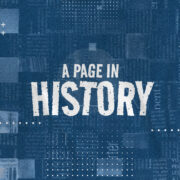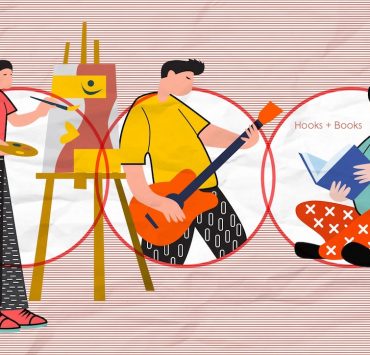The work of one’s hands

When I returned from my sabbatical last year, I was greeted by my fellow professors’ mounting worries about students’ use of artificial intelligence (AI) tools.
AI tools are not new: spelling and grammar checkers, word suggestions, and even social media algorithms are all forms of AI that make decisions on our behalf. But in the year I was gone, AI went from coughing up stilted writing and awkward photos, to creating essays, images, and videos that could threaten the careers of writers, designers, and creatives.
True, there are ways to harness AI to help children learn game design, think of new ways to solve problems, or provide insights into situations outside of one’s immediate experiences. However, students might also rely solely on AI to tick a task off the list, instead of employing their skills to reason, think, and learn.
For instance, some of my students admitted to using AI tools because they had so little time to finish their hundreds of pages of readings, let alone create an essay to consolidate what they had read. So, they saved time by summarizing the readings on ChatGPT, then writing an essay on the summary, or putting their readings into ChatGPT and making it spit out an essay that they could paraphrase later.
I could understand why our students resorted to such strategies: they were working with multiple readings for multiple classes on the same, strict, short deadlines, and still had to engage in extracurricular activities as they beefed up their resumes and prepared themselves for employment. They were running out of time, mental space, and emotional capacity.
I decided to make them write essays in class, using pen and paper. Because I was teaching creativity, I gave them prompts that would allow them to reference the meeting’s lessons, spur them to think deeply about problems from the point of view of people who actually experienced them, or help them express themselves.
I did this every meeting, and the results were sometimes surprising, always interesting. That was where I picked up the stories about how students used AI, and how they felt alienated from their work. It was also where some students unearthed the problems that would later form the basis of their final project, where they spoke about their frustrations with the government, Filipino culture, their homes, their classes, their families.
When the semester ended, some students said that they would miss the writing exercises (among our other class activities, nearly all of which were hands-on), because they now felt that they could write, were less afraid and less anxious about feedback, could see that they had the ability to create something on their own.
The skill of writing by hand hasn’t been studied widely because many educators and researchers think of it as a mere mechanical task. In a 2020 article in the British Journal of Educational Studies, Teresa Limpo and Steve Graham advocate for teaching budding writers to first write their work by hand, based on previous research that shows that writing by hand facilitates language learning, encourages ideation and conceptualization, and aids memory.
Researchers even advocate for teaching cursive. In a review of research, Madison Grapes and colleagues of Cedarville University found that writing cursive repetitively allows the brain to store letters as words, and thereby recognize them as words later; typing, on the other hand, makes the brain associate letters with finger movements.
This is not to say that we should abandon typing; rather, we should continue to teach writing by hand and to encourage doing so beyond the classroom, as the act also hones other skills.
Moreover, research shows that it is not only the act of writing that enables the brain to make new connections. It is the use of one’s hands (beyond pushing buttons or scrolling) that can help us learn no matter how old we are.
In a 2019 article for Psychology Today, Susan Biali Haas talks about the act of cleaning and tidying up not as procrastination, but as repetitive hands-on activities that relax the brain and prepare it for more cognitively demanding tasks later.
In a 2024 piece for The New York Times, Markham Heid covers the work of neuroscientists, who have found that working with one’s hands (say, through crafting, gardening, or designing) can improve attention and memory, reduce anxiety and depressive symptoms, and facilitate mindfulness.
This semester, I am repeating the in-class paper exercises for my two science communication electives. This time, the questions will attempt to consolidate insights from readings in sociology, philosophy, and science communication. My students are from different majors, and might not have the same enthusiasm for writing, or the same will to get out of the muck of alienation that the communication majors have.
I still hope that they recognize that they have hands that they can use, and for the many good things that might restore them to the curious, inquisitive children they once were.
———–
iponcedeleon@ateneo.edu


















